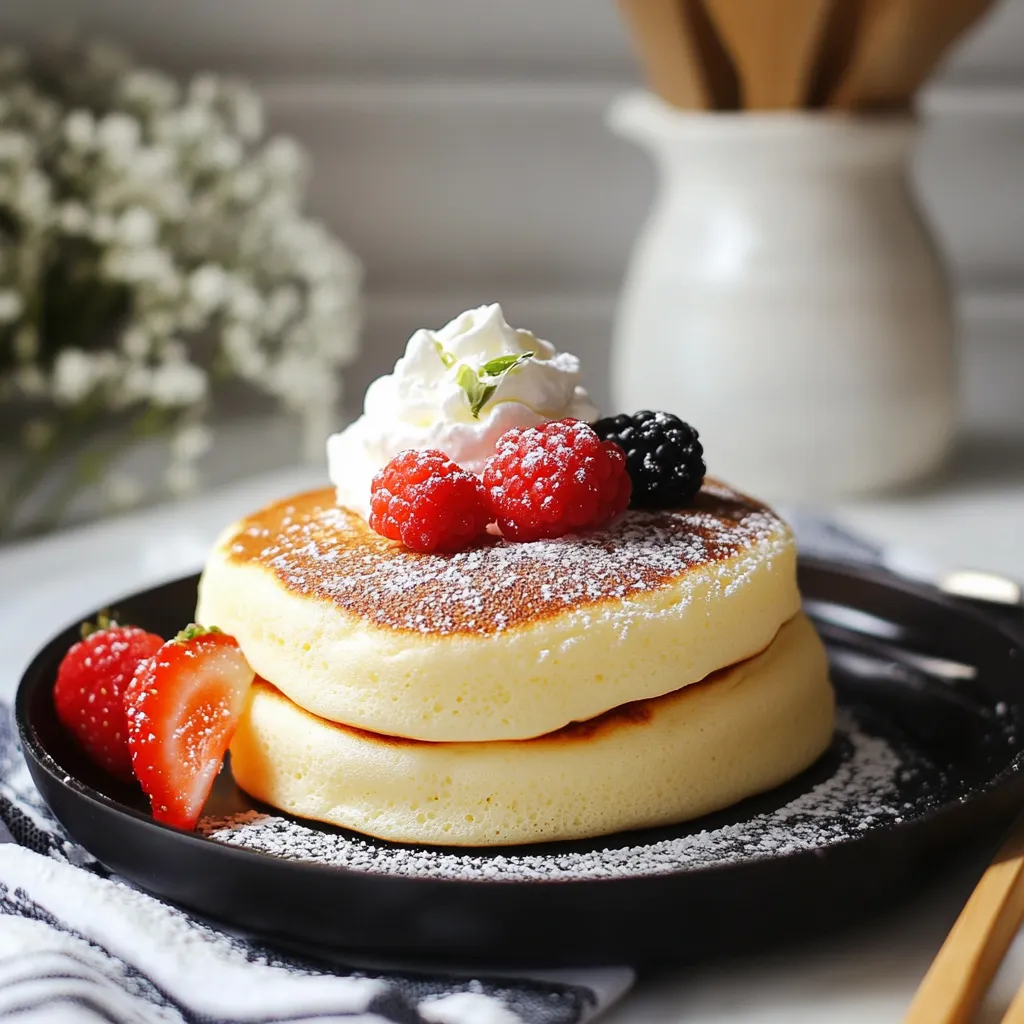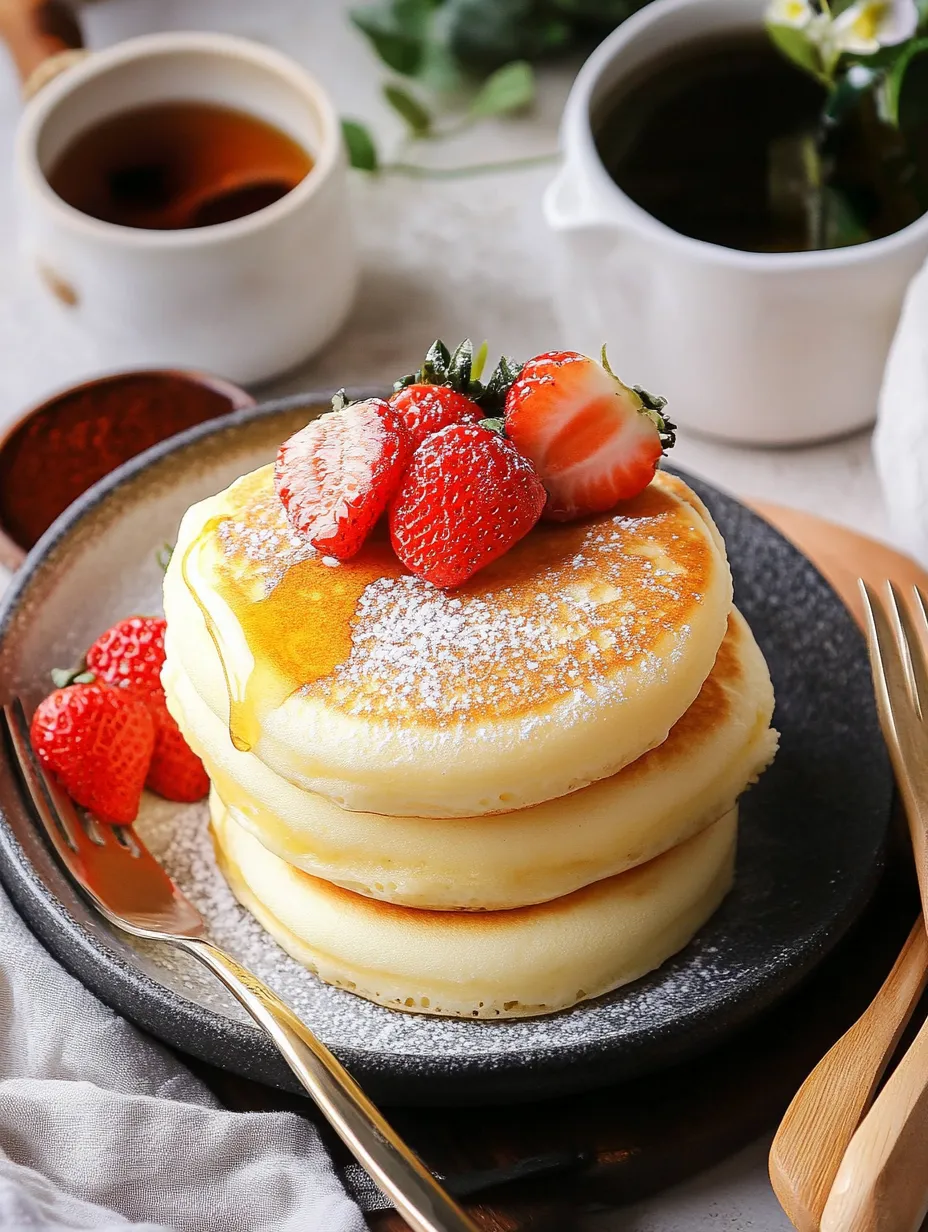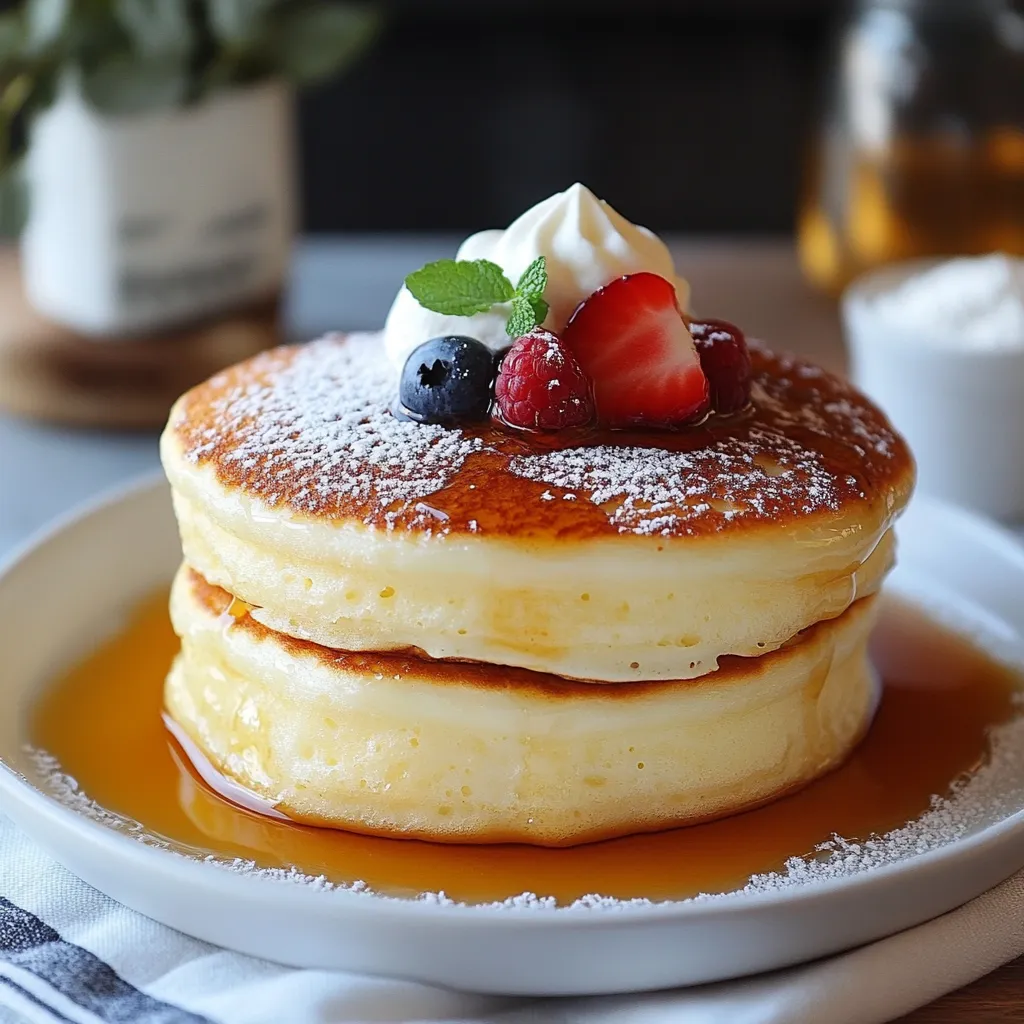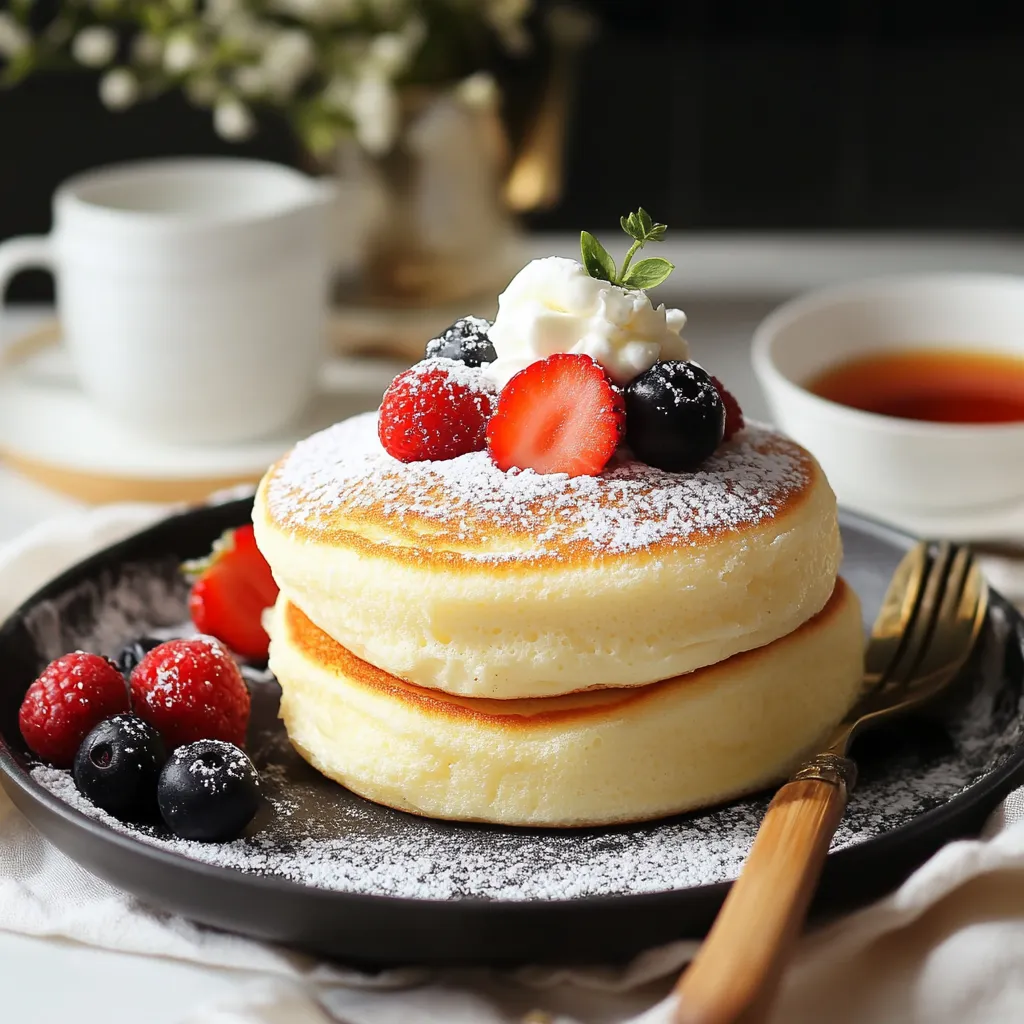 Pin it
Pin it
Japanese soufflé pancakes are truly something special - they've got this incredible airy quality that makes them seem weightless. When you get them right, they wobble slightly when served, with their impressive height showing just how much care went into making them. In my own kitchen adventures, I got completely hooked on nailing these fluffy treats, which taught me so much about the exact measurements used in Japanese cooking.
I made these for some friends during a recent morning get-together, and everyone went quiet watching their pancakes gently move on their plates. Even my pals who normally avoid cooking wanted to try making them after they took their first bite.
Key Ingredients and Smart Shopping Advice
- Eggs: Go for fresh ones at room temperature. If they're cold, you won't get enough volume, and older eggs lack the right protein structure for good peaks. I always set mine out exactly half an hour before I start cooking
- Milk: Don't skimp - full-fat milk adds the richness needed for softness. Make sure it's not cold from the fridge to keep your batter temperature steady
- Flour: Plain all-purpose flour does the job perfectly, but run it through a sifter twice to get rid of any clumps
- Sugar: You want the finest granulated sugar for smooth meringue. I often buzz regular sugar in my food processor for about half a minute to make it finer
 Pin it
Pin it
Nailing the Perfect Meringue
Getting egg whites just right is what makes soufflé pancakes special. Start with a totally clean, dry bowl - even tiny bits of fat or egg yolk will mess up the whipping process. Beat at medium speed until you see foam forming, then add a small bit of cream of tartar or a couple lemon juice drops. This little bit of acid helps lock in the protein structure, giving you a more reliable meringue.
 Pin it
Pin it
Watching Your Heat
Make sure your kitchen isn't too hot and keep an eye on ingredient temps. Warm kitchens make meringues droop and batter flatten. Work quickly once your meringue is done - every minute counts before it starts losing air. Keep your pan at a gentle, steady heat, around 300°F if you're checking with a thermometer.
How to Combine Without Deflating
Getting the base lighter is super important. First, mix about a third of your meringue into the yolk mixture with some energy - this first portion makes the rest easier to blend. For what's left, grab a big rubber spatula, cut down the middle and scoop along the sides of the bowl. Stop right when you don't see white streaks anymore.
Getting Sizes Right
I like using a big ice cream scoop or piping bag so all portions look the same. Your batter should be thick enough to keep its shape but still move smoothly. I usually pipe three circles on top of each other for each pancake, building up height while keeping them stable.
Cooking Like a Pro
This is where you really need to wait it out. After you portion your batter, cover the pancakes right away - the steam that builds under the lid helps them rise properly. Don't lift the lid to check during the first 4 minutes. Wait for tiny bubbles to show up on top before you try flipping them.
My Pancake Journey
I first tried making these after eating them at a tiny Tokyo spot. The cook there barely spoke any English but showed me tons through his careful movements and attention to detail. Each time I messed up at home taught me something new about how egg proteins work, how steam helps things rise, and why you can't rush good cooking.
Background and Tradition
These pancakes show off how Western cooking techniques blend beautifully with Japanese exactness. They started in hip Osaka cafes and now they're famous worldwide, showing how Japan takes food ideas from elsewhere and makes them even better. They really took off on social media when people couldn't get enough of watching them jiggle and bounce.
Making Them Look Amazing
Serving these pancakes takes some artistic touch. Stack them carefully, letting their natural height do the talking. A light sprinkle of powdered sugar makes them look snow-topped, while some fresh berries add bright colors and different flavors. For special times, I make a thin caramel cage around them - it's the ultimate test of getting your temperatures just right.
Trying Different Flavors
While vanilla works great as a classic choice, you can add other subtle flavors too. Matcha powder turns them beautifully green with an earthy taste. Lemon or orange zest makes them fresher, and a bit of almond extract gives them a fancy touch. Just remember each new addition means small adjustments to keep the texture perfect.
Fixing Common Problems
When your pancakes fall flat, think about what happened: Was your meringue firm enough? Did you mix too hard? Did your pan stay at the same heat? Every time things don't work out, you learn valuable stuff about egg structure and how heat moves through food.
Tools You'll Need
You'll want a solid non-stick pan with a lid that fits well. Kitchen scales help get measurements right. Thermometers keep your temperatures on target. I always have two spatulas ready - a wide one for flipping and a smaller one for shaping the pancakes.
Getting Ready Ahead of Time
 Pin it
Pin it
Success comes from being prepared. Measure everything out carefully, get your toppings ready beforehand, and make sure your workspace isn't cluttered. Having everything set up lets you focus completely on technique when timing matters most.
Smart Serving Ideas
These pancakes don't hold up long - you need to eat them right away as they start to sink within minutes. Warm up plates ahead of time, have all toppings ready to go, and make sure everyone's sitting down before you start cooking. The whole experience should be just as memorable as how they taste.
Understanding Your Stove
Learning how your stove behaves is super important. I actually mark the exact spot on my dial where the heat is just right - too hot and they burn, too cool and they won't rise properly. Every stove has its own sweet spot for making these delicate treats just right.
Bouncing Back From Mistakes
Even people who cook all the time run into problems sometimes. If your first batch doesn't turn out great, make quick changes: lower the heat, fold more gently, or work on getting a more stable meringue. Being able to adjust on the fly often leads to success.
Wrapping Up
Making truly great soufflé pancakes comes down to finding that sweet spot between ingredients and technique. Everything matters - from how stable your meringue is to how hot your pan gets - in getting that famous wobble. After countless tries in my kitchen, I've found that success isn't just about following steps in order but developing a feel for the whole process.
Frequently Asked Questions
- → Can I prep the batter beforehand?
- It's better to mix and cook the batter immediately since the meringue can lose its air if left sitting.
- → Is an alternative flour okay?
- You’ll get the best results with all-purpose flour, though a gluten-free blend could work if necessary.
- → Can these be made without eggs?
- Replacing eggs with aquafaba (from chickpeas) or other vegan subs might work, though it won't be quite the same.
- → Why do my pancakes collapse?
- Overmixing and not being gentle when folding the meringue in can cause this. Cook slow on low heat and keep the lid closed as much as possible.
- → Can they be made ahead of time?
- Eating them fresh is best since they can flatten and lose their fluffy texture quickly after cooking.
